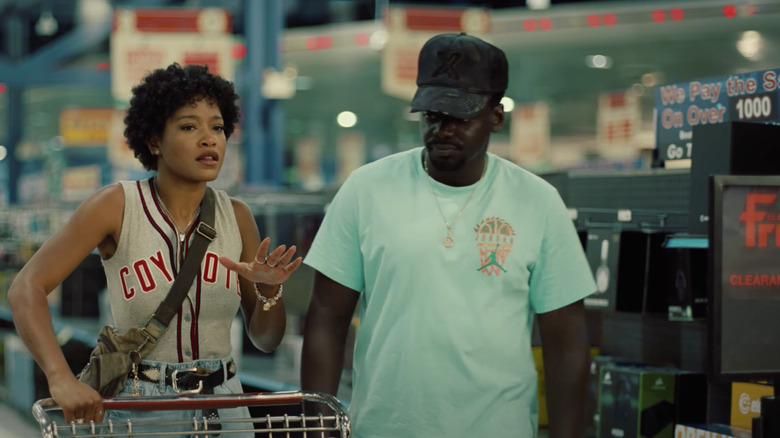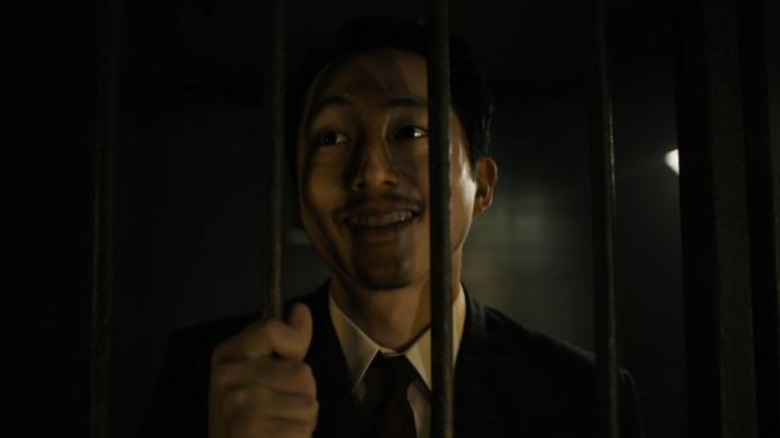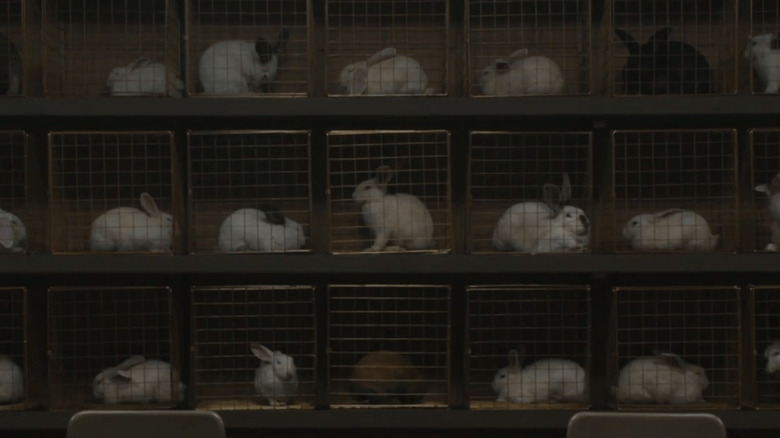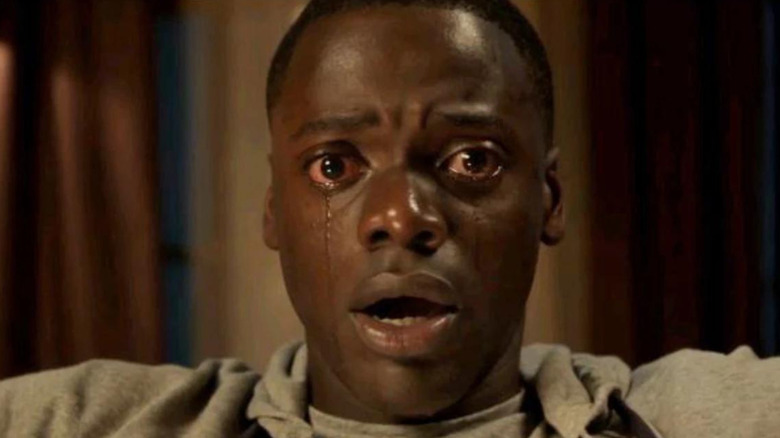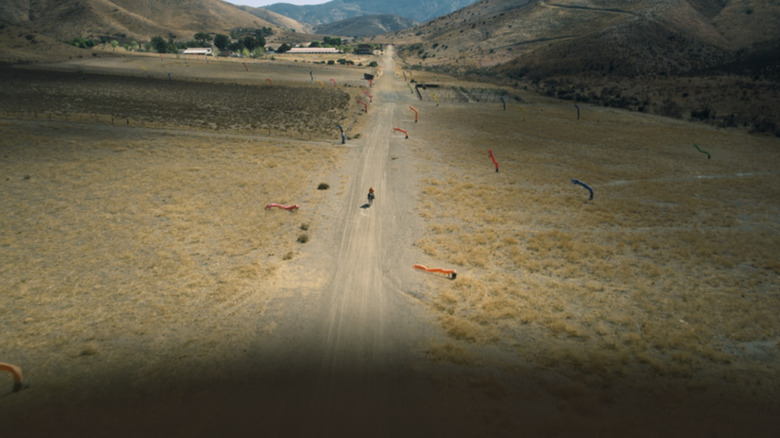The Best Jordan Peele Easter Eggs In Nope
Note: this article contains spoilers for "Nope."
With only three movies under his belt, it's shocking how distinct of a director Jordan Peele has become. While primarily known for his weaving of horror and social commentary, he's also begun developing other notable traits, such as some recurring stylistic choices and even an emerging muse in Daniel Kaluuya. It's pretty remarkable given how his first ever directed film was only released five years ago.
However, Peele is a director whose work is never quite predictable in stylistic terms, especially with "Nope." While his other films were both tonally and aesthetically dark, the majority of this new film's terror takes place in sunny valleys. This, along with some other changes to his usual style, make for a very interesting pivot in his creative style that is sure to continue evolving. This pivot is also demonstrated in some of the hallmarks that were added into "Nope," usually changed in some way but still quite distinct. Here are a few of these altered Easter eggs.
Returning Twilight Zone travelers
While this might be Peele's first film to feature aliens, he's no stranger to the intergalactic creatures. His revival of "The Twilight Zone," which was criminally underrated, had a few episodes that featured aliens, and although he didn't direct any of the episodes, he still had a significant role in the series as its producer and narrator.
Because of this, it shouldn't be a surprise that he cast a couple of the actors from the show's alien-centric episodes in "Nope." Steven Yeun, who played the doomed former child actor Ricky "Jupe" Park in the film, previously appeared in a season one episode of "The Twilight Zone" titled "A Traveler." He played a mysterious tourist that arrives in Alaska that has a big secret, as he actually belongs to an alien race planning on invading Earth.
The final episode of the revival, season 2's "You Might Also Like," not only centers around an alien invasion but is also connected to one of the original series' episodes titled "To Serve Man." Osgood Perkins, director of films like "The Blackcoat's Daughter," directed and appeared in the episode in a cameo role as an alien from the race known as the Kanamit. He also had a bit role in "Nope" as Fynn, the director of a commercial that OJ (Kaluuya) and Emerald (Keke Palmer) are fired from.
Using opening credits to convey the bigger picture
Eagle-eyed viewers probably felt a sense of familiarity when watching the opening credits to "Nope," and for good reason. The scene of a then-strange and nondescript void panning into a square frame showing "The Horse in Motion" has some similarities to another one of Peele's films. In the opening credits to "Us," viewers are shown a close-up of a rabbit in a cage. As the camera pans out, we see several rabbit cages stacked on top of each other in an eerie room.
These two sequences are essentially inverses of each other when it comes to how they are shot; whereas the credits in "Us" pan back for its big reveal, "Nope" moves further inward. However, these movements accomplish the same effect, which is showing the scope of the danger that the protagonists in both films will eventually witness. After all, what is more terrifying than either a deserted room full of animals or a seemingly never-ending void of darkness?
A new take on the Peele Stare
Ah, yes, the Peele Stare. While his directorial work is still pretty limited, this particular shot has already been cited as a modern classic given its intensity. In "Get Out," Chris (Kaluuya) is hypnotized by his girlfriend's mother, Missy (Catherine Keener), his face staring in shock at the camera as a tear rolls down his cheek. A similar shot appears in "Us," this time pointed at Adelaide (Lupita Nyong'o) as she listens to her Tethered, Red, talk about the injustices they face and what they plan to do to get revenge.
"Nope" gives us a slightly similar shot with Emerald. At the end of the film, the audience sees her stare out into the distance as she holds back tears. The shot progresses into her smiling as she sees the figure of OJ among the dust, having survived his chase with the Viewer. While not exact in its presentation, the Peele Stare is still present in "Nope," albeit in a more hopeful form as it was shown in a happier, climactic moment rather than a terrifying one.
What these show about Peele's future as a director
As you might have guessed, this list is a bit on the shorter side. This could be for a pretty distinct reason; "Nope" signifies a new chapter in Peele's directorial career, and this can be seen in the aforementioned opening credits. In both "Get Out" and "Us," the opening credits are typed in a font akin to Times New Roman or Century Schoolbook. However, the font choice in the credits to "Nope" is more similar to a font like Proxima Nova. This might seem like an insignificant change, but when you consider how one of the themes of "Nope" is looking towards a better future than the one we currently live in, it isn't hard to see how it could mean something more.
So, was it even worth it to write a post about these so-called Easter eggs in "Nope" when the film signaled that he might not be interested in continuing the traits his work has established thus far? Maybe not, but it's not like they weren't there — they were just present in different forms, showcasing how Peele is developing as a director and a creative. No matter where he goes, though, we're sure that what he will create will be out of this world.
"Nope" is now playing in theaters.
